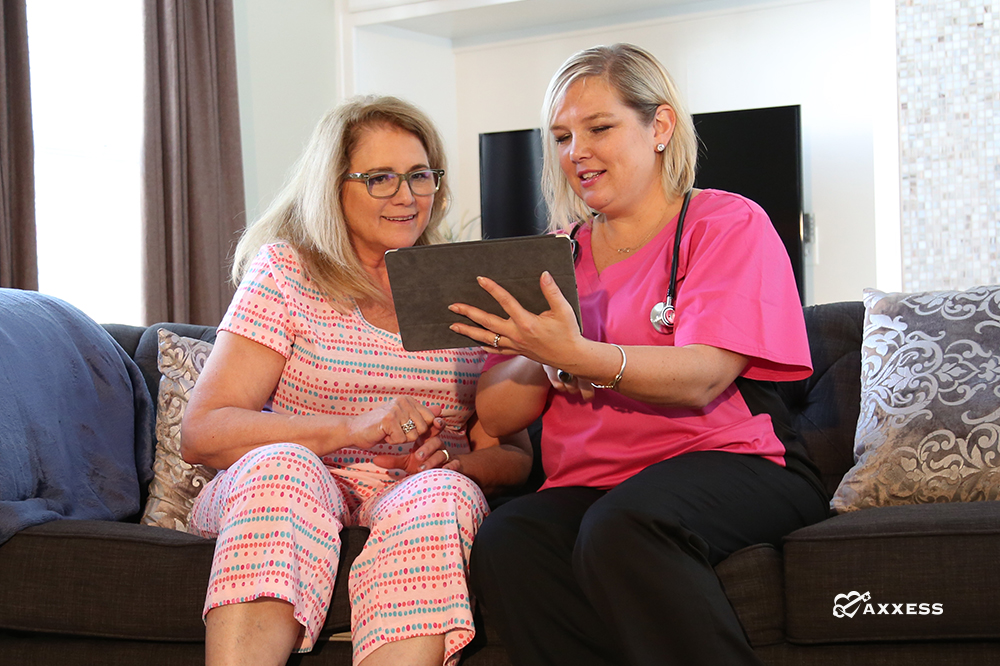The updates to the Medicare Home Health Conditions of Participation (CoPs) emphasize quality of care on many levels, from the comprehensive assessment to structure and operation of the home health agency itself. This is consistent with the Centers for Medicare and Medicaid (CMS) focus on value based care and focusing on patient centered care. Quality patient care and best outcomes should be the focus from the field to administration, and updated CoPs reflect this attitude.
Standard §484.45(b) requires that the encoded OASIS data must accurately reflect the patient’s status at the time of assessment. This comprehensive assessment must include the patient’s cognitive and psychosocial status, as well as their strengths, goals, and care preferences (§484.55(c)(1), (c)(2)). These factors, combined with caregiver willingness and ability to provide care and availability and schedules, impact the patient’s rehabilitation potential. At §484.50, the standards for written and verbal notification of patient rights require the patient, and his or her representative(s), are notified of their rights in a manner that he or she understands, in their primary language, and free of charge. The goal of this regulation is ensuring the patient is well educated on their rights and encouragement to exercise them to serve as a foundation for increased patient involvement. encouraged.
At §484.60, we see that the plan of care must be individualized and focused on the specific needs of the patient. Care of this patient is to be coordinated with the interdisciplinary team, patient, caregiver(s), representative(s), as well as physicians who give orders for the plan of care. This coordination of care is imperative to keep the team informed of the patient’s progress, or lack thereof, so that meaningful outcomes and timely discharge is achieved.
Finally, at §484.65, we find the regulations and standards for Quality Assessment and Performance Improvement (QAPI). While agencies have always had a form of QAPI in their agencies, the archaic style of monitoring quality after the fact is being replaced by an active, self-monitored, data-driven quality program. For example, rather than simply following information regarding infections and incidents and reporting on them after the fact, agencies will be required to identify them as a problem area for improvement and actively monitor data for opportunities for improvement before additional incidents occur. These include high-volume, high-risk, and problem-prone areas of focus. For example, an agency may have a high number of wound care patients, which by sheer volume make this a potential risk area. Another agency may only take IV cases on occasion, and therefore may not be as up to date on the care and equipment used for such patients. This makes this a high-risk area for this agency which may become apparent due to higher rates of phlebitis and infusion incidents. An agency may also have higher than state and national rates of hospitalizations, which could be problematic. These areas and related data should be explored, and a program to improve the risks for these areas should be initiated and monitored. The agency could use CASPER reports, Home Health Compare, incident reports and other data to track, analyze and implement preventative actions.
Lastly, in the regulation at §484.65(e), the governing body of the HHA have oversight responsibility and must ensure the QAPI program and patient safety programs are defined, implemented, and maintained, and that the QAPI efforts address priorities for improved quality outcomes and patient safety. The governing body must also ensure that any findings of fraud or abuse are appropriately addressed.
There is a new role for clinical manager as part of the agency organization at §484.115(c). This clinical manager’s role in quality is being responsible for all coordination of referrals, patient care, staff assignments, and ensuring the patient’s plan of care is updated and communicated as per the standards. The clinical manager is responsible for ensuring that care of the patient is delivered in the best possible scenario for good outcomes. In fact, CMS states in their subsequent documents that scheduling of patient visits should occur so that the patient benefits most from the delivery of care. For example, if the home health aide generally tires the patient during their visit and a physical therapy (PT) visit is to follow the aide visit, this should be rescheduled so that the patient receives the full benefit of the PT session.
With the increased emphasis on quality, the home health agency will need to ensure staff members are trained adequately on patient safety and quality care, and adequately documenting the coordination of services and care that is delivered within the team. The new interdisciplinary team approach will help ensure that the clinical team is working to deliver coordinated, patient-centered, quality care with a focus on patient outcomes.
We will continue to see additional quality narratives throughout home health regulation in the coming months, and you must work with your vendor to ensure they maintain your compliance, while preserving ease of use. Axxess has a suite of products to assist your organization with remaining compliant, monitoring data, coordinating quality improvement efforts, and improving patient outcomes.

